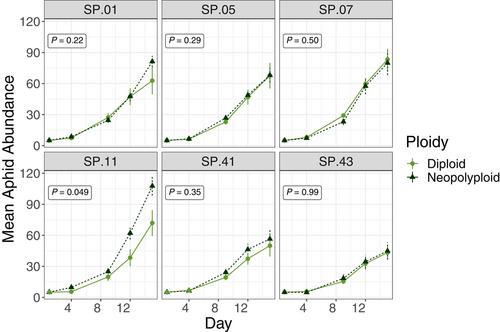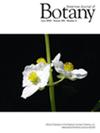Neopolyploidy-induced changes in giant duckweed (Spirodela polyrhiza) alter herbivore preference and performance and plant population performance
Abstract
Premise
Polyploidy is a widespread mutational process in angiosperms that may alter population performance of not only plants but also their interacting species. Yet, knowledge of whether polyploidy affects plant–herbivore dynamics is scarce. Here, we tested whether aphid herbivores exhibit preference for diploid or neopolyploid plants, whether polyploidy impacts plant and herbivore performance, and whether these interactions depend on the plant genetic background.
Methods
Using independently synthesized neotetraploid strains paired with their diploid progenitors of greater duckweed (Spirodela polyrhiza), we evaluated the effect of neopolyploidy on duckweed's interaction with the water-lily aphid (Rhopalosiphum nymphaeae). Using paired-choice experiments, we evaluated feeding preference of the herbivore. We then evaluated the consequences of polyploidy on aphid and plant performance by measuring population growth over multiple generations.
Results
Aphids preferred neopolyploids when plants were provided at equal abundances but not at equal surface areas, suggesting the role of plant population surface area in driving this preference. Additionally, neopolyploidy increased aphid population performance, but this result was dependent on the plant's genetic lineage. Lastly, the impact of herbivory on neopolyploid vs. diploid duckweed varied greatly with genetic lineage, where neopolyploids appeared to be variably tolerant compared to diploids, sometimes mirroring the effect on herbivore performance.
Conclusions
By experimentally testing the impacts of polyploidy on trophic species interactions, we showed that polyploidization can impact the preference and performance of herbivores on their plant hosts. These results have significant implications for the establishment and persistence of plants and herbivores in the face of plant polyploidy.


 求助内容:
求助内容: 应助结果提醒方式:
应助结果提醒方式:


